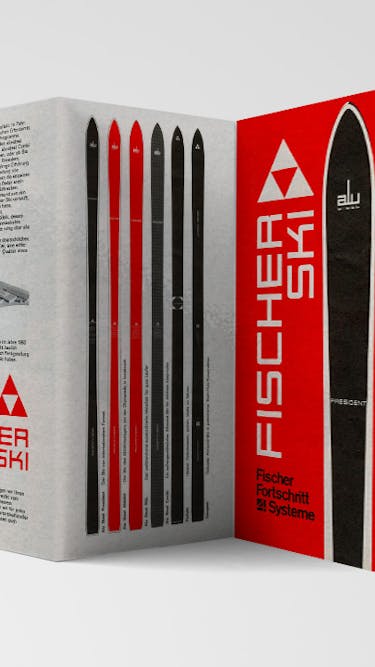1958 World Ski Championships in Bad Gastein: the day of the "miracle" Austrian skiing team, headed by Toni Sailer, Anderl Molterer, Josl Rieder and Ernst Hinterseer. The heroes of the World Championship ski on Kästle, Kneissl, Dynamic, Atomic. The Fischer company tries to attract attention with a shop window and a communications centre – which draws only a few visitors – in the town centre. But all eyes are on the ski grandees Kneissl and Kästle, who enjoy their stars' triumphs to the full. Josef Fischer junior watches the races from behind the fence. The downhill race is won by Toni Sailer who is then very nearly crushed by autograph hunters. And Josef Fischer gets carried away, too; he tries to climb over the fence, but a senior civil servant called Mader from the Department of Education notices this and calls a couple of policemen over. Josef Fischer, head of what will be the world's largest ski manufacturer ten years later, is chased away and threatened with a fine if he does not leave the area.
Fischer skis are not yet taken seriously among ski racers, either. "Of course I started off at the regional level in Upper Austria, but then I was bound to move on to the national squad. They naturally roared with laughter and said: ‚What, in Ried? Have you got any mountains there?' They really made fun of me, and refused point-blank even to try our skis out. I made great efforts, and did succeed in convincing some of the young up-and-comings, but I failed to make any impression on the national squad," Josef Fischer recalls. The first proper contacts to international racers developed in 1961. "In Val d'Isère the Austrians didn't want to know. But then the Germans took our ski and gave it a real trial. It interested them and they were very down-to-earth. It just didn't bother them where I'm from and what my name is. They tested our product and achieved very satisfactory results. That was the metal ski. At that stage the other Austrian manufacturers had no metal skis. It then turned out that this ski was four to five seconds faster in downhill races. That was the legendary ‚Alu Steel'."
Almost the entire German team put their faith in Fischer skis, including Fritz Wagnerberger, Willy Bogner, Wolfgang Bartels and Barbara Henneberger. With Fritz Wagnerberger the first major international success is scored. The subsequent President of the German Skiing Association wins the Arlberg-Kandahar Downhill, a race with a long tradition, in Mürren in March 1961. But it is an Austrian who ensures Fischer's definitive breakthrough to becoming a famous racing brand: Egon Zimmermann, the chef from Arlberg, takes part in the giant slalom in Chamonix in the 1962 World Championship on Kästle. An argument blows up between him and his assistant from the ski manufacturer. In the very next race, the downhill, Zimmermann switches to Fischer skis. On "Alu Steel" he wins a bronze medal – Fischer's first medal in a downhill World Championship. A few weeks later it is time for the Kandahar races in Sestrière. Egon Zimmermann phones Josef Fischer and asks him to provide him with slalom skis. He tests the wooden "S 100" ski for three hours, and – disregarding his teammates' ridicule of the "100-schilling ski" – decides to race on it. Egon Zimmermann wins in Sestrière, taking Schranz, Nenning and co. aback.
Fischer's ascent as a racing brand culminates in the 1964 Olympic Games in Innsbruck. On 30 January 1964 Egon Zimmermann wins the gold medal in the prestigious downhill race. The man from Arlberg crosses the finish line in a winning time of 2:18.16 minutes on "Alu Steel". Some 50,000 enraptured spectators celebrate the Austrian victory. For Zimmermann this is the climax of his career, for Fischer the first Olympic gold medal. Fischer collects the downhill bronze medal, too, won by the German Wolfgang Bartels. With these successes the ski manufacturer from Ried is definitely here to stay in racing.
The racing successes have quite an effect on sales. During the 1964/65 season more than 250,000 pairs of skis are sold. The breakthrough is due to the metal ski "Alu Steel", which accounts for 40% of total sales. Exports benefit from the successes, too. In West Germany Fischer sales are up 45% in 1965 from 1964. And even in faraway Japan deliveries go up from 330 to 2,000 pairs of Fischer skis.





